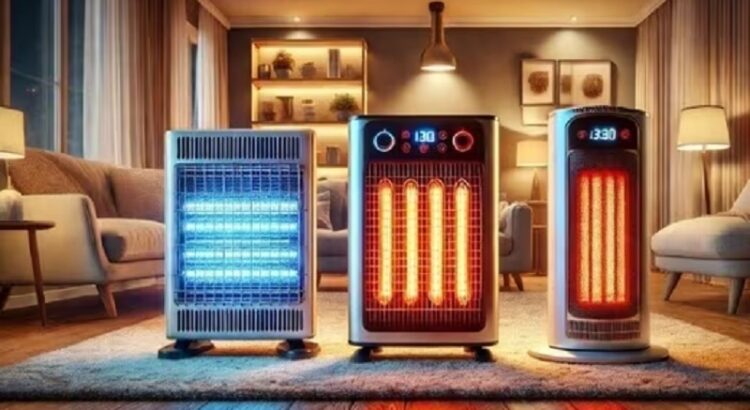Voltage surges, often caused by power fluctuations, lightning strikes, or overloaded electrical circuits, can damage home appliances, including heaters. Protecting your home heater from these unpredictable spikes is crucial for maintaining functionality and prolonging its lifespan. Below, we provide a detailed guide to safeguard your heater against voltage surges effectively.
1. Understand the Risks of Voltage Surges
Voltage surges are short, sharp increases in electrical voltage that can exceed the design limits of appliances. For heaters, such surges can lead to overheating, burnt circuits, or complete failure of internal components.
Key Insights:
- Voltage surges can originate internally, such as from turning on high-power devices, or externally, like during a lightning strike.
- Even minor surges, if repetitive, can gradually degrade a heater’s internal circuitry.
2. Invest in a High-Quality Surge Protector
A surge protector is one of the most effective ways to shield your home heater from power surges. These devices act as a barrier, diverting excess voltage away from connected appliances.
Practical Advice:
- Opt for surge protectors with a high joule rating, as they offer better absorption capacity.
- Choose models with indicator lights to confirm proper functioning and protection status.
3. Install a Whole-House Surge Protection System
For comprehensive protection, consider installing a whole-house surge protector at your main electrical panel. This setup safeguards all connected devices, including your heater, from large-scale surges.
Practical Advice:
- Hire a licensed electrician to install the system for optimal performance.
- Ensure the surge protector complies with local electrical codes and standards.
4. Use a Dedicated Circuit for Your Heater
Sharing circuits with multiple high-powered devices increases the likelihood of voltage fluctuations. Assigning a dedicated circuit to your heater reduces this risk and ensures stable power supply.
Practical Advice:
- Consult an electrician to assess your home’s electrical wiring and make necessary adjustments.
- Avoid plugging heaters into power strips or overloaded outlets.
5. Maintain Grounding and Wiring Integrity
Proper grounding and well-maintained wiring are essential for dissipating excess voltage safely. Faulty wiring can exacerbate the effects of voltage surges, posing a significant threat to your heater.
Practical Advice:
- Schedule regular electrical inspections to identify and address potential wiring issues.
- Replace damaged or outdated wiring to minimize risk.
6. Turn Off Your Heater During Severe Storms
Lightning strikes during storms are a common cause of voltage surges. Turning off and unplugging your heater during extreme weather can protect it from sudden power spikes.
Practical Advice:
- Develop a habit of unplugging appliances when they are not in use during storms.
- If your heater is hardwired, consider installing a disconnect switch for easier power control.
7. Monitor Your Home’s Voltage Levels
Voltage monitors help you identify irregularities in your electrical system, such as persistent overvoltage or undervoltage, that could harm your heater.
Practical Advice:
- Install voltage monitors in key areas to track fluctuations in real-time.
- Address abnormal readings promptly with the help of a qualified electrician.
8. Use an Uninterruptible Power Supply (UPS)
A UPS provides temporary backup power and protects appliances from sudden voltage dips or surges. While commonly used for computers, UPS systems are also effective for safeguarding heaters.
Practical Advice:
- Select a UPS model rated for the power requirements of your heater.
- Ensure the UPS includes surge protection features for added security.
9. Regular Maintenance of Electrical Panels
A poorly maintained electrical panel can increase the risk of surges and other electrical issues. Regular inspections ensure optimal performance and safety.
Practical Advice:
- Schedule maintenance checks to clean and tighten connections in the panel.
- Upgrade old panels to modern designs with enhanced surge protection capabilities.
10. Ensure Adequate Insurance Coverage
While preventive measures are crucial, unforeseen events can still cause damage. Comprehensive home insurance often covers electrical surge damage, providing an additional safety net.
Practical Advice:
- Review your policy to ensure coverage for appliances, including your heater.
- Document your protective measures, such as surge protector installations, to support potential claims.
A Thoughtful Approach to Heater Protection
Voltage surges pose a serious threat to home heaters, but with proactive measures and a commitment to system maintenance, these risks can be minimized. From installing surge protectors to maintaining electrical integrity, each step contributes to a reliable and efficient heating experience. Protecting your heater not only ensures comfort but also safeguards your investment, providing peace of mind during every season.





